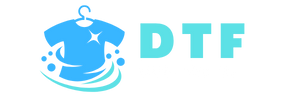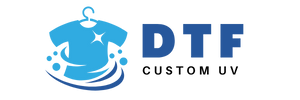The UV DTF gangsheet builder is transforming how shops approach custom print runs by marrying UV DTF printing capabilities with intelligent layout. As a core part of DTF gang sheets optimization, it uses gangsheet software to automatically position designs, maximizing substrate use and maintaining color fidelity. This automation delivers a meaningful boost in print shop efficiency by reducing manual rearrangement and cutting setup times across multiple jobs. By optimizing the layout for each substrate and aligning bleed, color targets, and ink coverage, you ensure faster turnarounds without compromising quality. For teams aiming to deliver reliable, scalable results, the UV DTF gangsheet builder is a smart starting point for improving custom print runs.
In other words, think of this as a sheet-nesting engine for UV DTF projects, a layout optimizer that packs multiple designs onto a single printable sheet. LSI-friendly terms include UV-curable direct-to-film workflow tool, digital nesting for textiles and hard surfaces, and production-automation software that helps printers scale. Conceived as a modernization of traditional nesting, it emphasizes substrate awareness, color management, and automated previews to guide operators before hitting print. Ultimately, the idea remains the same: maximize material usage, shorten setup, and keep output consistent across runs, whether you’re a small shop or a large studio.
Understanding UV DTF Printing and DTF Gang Sheets
UV DTF printing uses UV-curable inks that cure instantly, delivering vibrant, durable images on textiles, signage, and hard-surface products. The rapid curing enables shorter production cycles and tighter deadlines, a critical driver of print shop efficiency in busy shops.
DTF gang sheets maximize substrate usage by nesting multiple designs on a single sheet, preserving edge quality and color fidelity. This approach helps studios reduce material waste and lowers the cost per unit, making it a sensible strategy for efficient custom print runs.
UV DTF gangsheet builder: Elevating UV DTF printing workflows
The UV DTF gangsheet builder is software designed to automatically arrange multiple designs on one sheet tailored for UV DTF workflows. It factors in substrate type, ink coverage, bleed, color profiles, and printer capabilities to output an optimized cutting plan that preserves color fidelity.
Integrating such a builder into your production line reduces manual nesting, speeds setup, and supports scalable output for both small orders and large campaigns—boosting print shop efficiency and enabling smooth custom print runs.
Key Features of a Top-Performing Gangsheet Software for Custom Print Runs
Top-performing gangsheet software includes auto-nesting, printer/substrate awareness, and seamless RIP workflow integration, letting operators realize efficient layouts for every job and establish repeatable processes for custom print runs.
Color-management features, bleed handling, and version-controlled templates help maintain brand fidelity and consistency across multiple designs, which is essential for reliable print shop efficiency.
Optimizing Substrate Use and Color Fidelity with Auto-Nesting
Auto-nesting analyzes every design against substrate dimensions and coating considerations to place items with minimal waste and maximum sheet yield, a cornerstone of optimizing substrate use in UV DTF printing.
Precise bleed, trim tolerances, and ICC-based color targets ensure color fidelity remains steady from prepress to final output on diverse substrates, supporting consistent results across DTF gang sheets.
Integrating with RIPs, Workflows, and Real-Time Previews for Consistent Results
Real-time previews, accurate color management, and tight RIP integration create a smooth, end-to-end workflow for UV DTF printing, reducing missteps and ensuring repeatable results.
Linking the gangsheet builder to your production queue and substrate libraries minimizes handoffs and errors, delivering reliable outcomes from design to finished product.
ROI, Pitfalls, and Practical Tips for Implementing UV DTF Solutions
ROI for UV DTF solutions comes from material savings, reduced setup time, and increased throughput, letting shops handle more custom print runs per shift without adding staff.
A phased implementation—with pilots, templates, and operator training—helps avoid common pitfalls and establishes measurable benchmarks for waste, cycle time, and yield.
Frequently Asked Questions
What is a UV DTF gangsheet builder and how does it benefit UV DTF printing?
A UV DTF gangsheet builder is software that automatically nests multiple designs onto a single gang sheet tailored for UV DTF printing. It accounts for substrate type, ink coverage, bleed, color profiles, and printer capabilities to maximize sheet value and minimize waste. By optimizing layout and automating tasks, it speeds up setup and improves accuracy for custom print runs.
How does UV DTF gangsheet software improve print shop efficiency for custom print runs?
The software automates nesting, layout adjustments, and color management, reducing manual prep and rework. It generates optimized gang sheets that fit your printer bed, substrate, and inks, speeding throughput for custom print runs while cutting waste. This directly supports print shop efficiency by shortening lead times and simplifying production.
What features should I look for in a gangsheet software for UV DTF printing?
Key features include auto-nesting with printer and substrate awareness; ink and color management integration; bleed, trim, and tolerance handling; RIP and workflow integration; multi material support; file management and version control; job templating and reusability; and real time previews for quick validation.
How does auto nesting influence consistency and throughput for custom print runs?
Auto nesting optimizes layouts across diverse designs, increasing sheet yield for custom print runs and reducing waste. It enforces design alignment and consistent ink coverage, which improves repeatability across colorways and products. Real time previews help catch issues before production, further boosting consistency.
How can I integrate a UV DTF gangsheet builder into an existing workflow (RIP, design prep, and production)?
Integrate by aligning with your RIP and design tools, starting with design intake and color profiles. The builder analyzes active jobs, creates optimized gang sheets, and exports a single file for UV DTF printing. This reduces handoffs, improves queue accuracy, and smooths the transition from concept to customer.
What ROI can a UV DTF gangsheet builder deliver for small to mid size print shops?
Expect material savings from reduced substrate waste, shorter setup times, and higher throughput. The result is faster turnarounds, more predictable lead times, and the ability to take on additional custom print runs without adding staff, delivering measurable ROI and a stronger competitive edge.
| Topic | Key Points | Notes |
|---|---|---|
| What is UV DTF gangsheet builder? | Software that automatically arranges multiple designs on a single gang sheet tailored for UV DTF printing; factors substrate type, ink coverage, bleed, color profiles, and printer capabilities; creates an optimized cutting plan to maximize sheet value while preserving color fidelity and print quality. Can be integrated into existing workflows to reduce manual layout work and errors. | Designed to improve efficiency and consistency across UV DTF runs. |
| Why UV DTF? | Direct-to-film technology enables vibrant, durable prints on textiles and hard surfaces. UV-curable inks cure fast and adhere well, making them ideal for apparel, promotional items, signage, and merchandise. When combined with intelligent nesting, you gain faster setup, better ink utilization, and scalable production for small orders or large batches. | Pairs well with nesting to maximize efficiency. |
| Main benefits – Material efficiency | Nesting reduces waste by optimizing layouts; the builder calculates margins, bleed, and tile sizes, enabling more designs per sheet without compromising print integrity. Results in lower substrate costs per unit and a smaller carbon footprint. | |
| Main benefits – Reduced setup time | Automates layout to save technicians hours; layouts are pre-validated for the printer, substrate, and inks; setup is as simple as loading the sheet, choosing a preset, and starting the run. | |
| Main benefits – Production consistency | Reduces variability between jobs by enforcing design alignment, edge-to-edge printing, and predictable ink coverage; ensures the same high-quality output across colorways and product lines. | |
| Key features to look for | – Auto-nesting with printer and substrate awareness – Ink and color-management integration – Bleed, trim, and tolerance handling – RIP and workflow integration – Multi-material support – File management and version control – Job templating and reusability – Real-time feedback and preview |
|
| How the UV DTF gangsheet builder integrates with your workflow | Design intake; the builder analyzes all active jobs, applies nesting rules, and outputs optimized gang sheets tailored to the shop’s hardware. Operators receive a single file with multiple designs arranged efficiently. On-press benefits include predictable bed usage and consistent ink distribution; post-print steps follow the same queue with fewer interruptions. | |
| ROI considerations | Investing in a UV DTF gangsheet builder yields measurable ROI through material savings, labor efficiency, and increased throughput/capacity. Payback is estimated by comparing current waste, setup time, and throughput against the gains from nesting improvements. | |
| Practical implementation tips | – Audit current waste, setup time, and yield per sheet – Pilot with a small set of designs and compare metrics (ink usage, color accuracy, edge quality) – Build templates for recurring campaigns – Train operators on nest previews, alerts, and substrate variations – Review performance data regularly and adjust nesting rules and color targets |
|
| Common pitfalls | – Over-optimization that degrades quality – Incompatible hardware assumptions (printer, ink, curing) – Inadequate file preparation (missing fonts, embedded images, wrong color space) – Underutilizing templates and reusable layouts |
|
| Case in point | Hypothetical shop using UV DTF printers and a growing design catalog. After implementing auto-nesting and color-managed templates, they saw reductions in setup time (25-40%), material waste (12-18%), and improved overall output per shift, with faster turnarounds for clients. | |
| Future trends | AI-assisted nesting, tighter color-management integration, smart material libraries, and analytics that continuously optimize layout decisions and color consistency across batches. | |
| Conclusion (from content) | A UV DTF gangsheet builder is a strategic addition to any shop aiming to maximize efficiency in custom print runs, reducing waste and setup times while improving consistency and throughput. It helps production scale with demand and delivers measurable ROI and a stronger competitive edge. |
Summary
UV DTF gangsheet builder is a strategic tool for modern print operations seeking to maximize efficiency in custom print runs. It combines UV DTF printing with intelligent nesting to reduce waste, speed setup, and scale production, delivering tighter color control, consistent output, and a clearer path from concept to customer. By evaluating features, workflow integration, ROI, and implementation steps, shops can adopt this technology to drive faster turnarounds, lower costs, and a stronger competitive edge.



